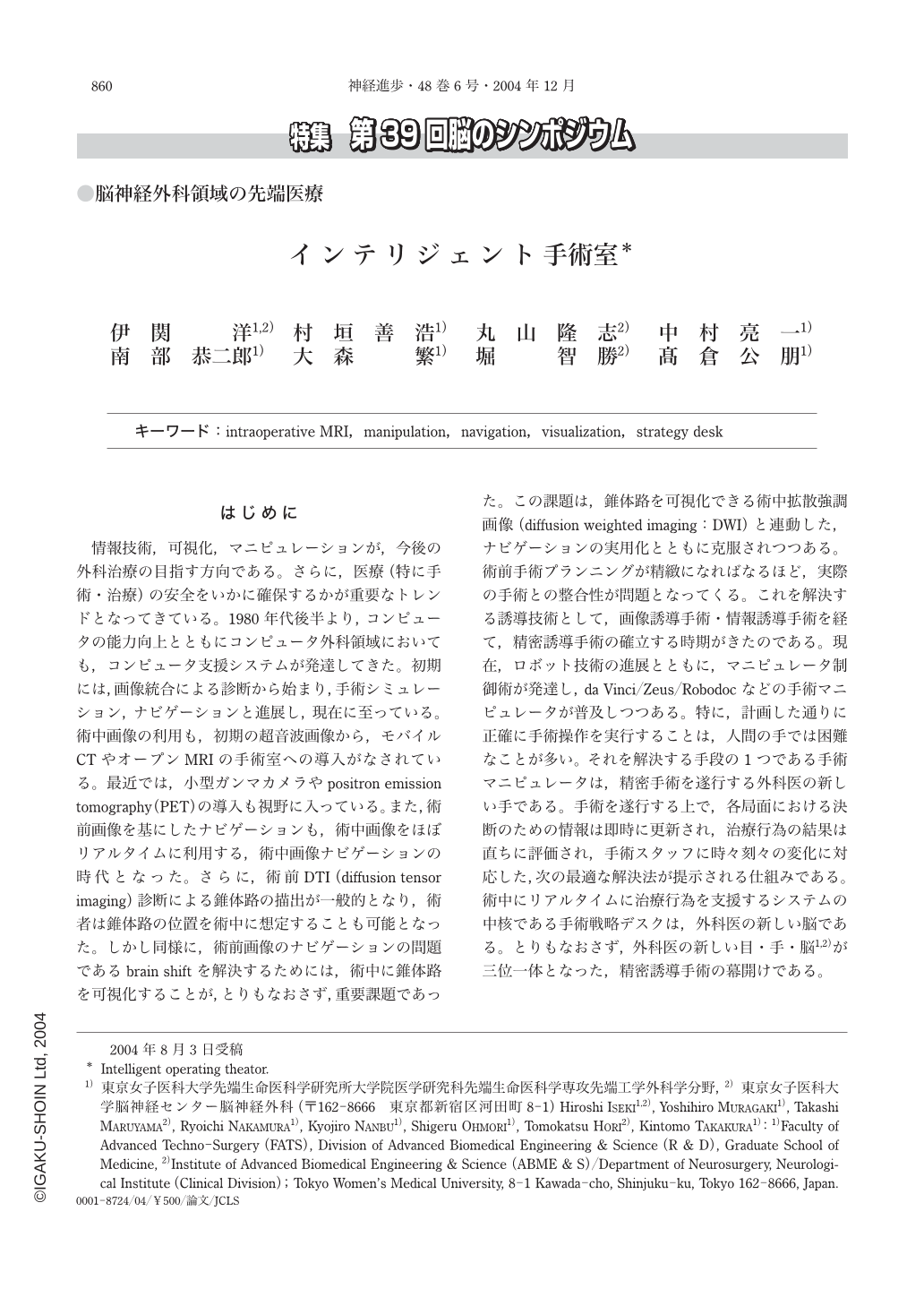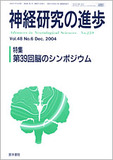Japanese
English
- 有料閲覧
- Abstract 文献概要
- 1ページ目 Look Inside
はじめに
情報技術,可視化,マニピュレーションが,今後の外科治療の目指す方向である。さらに,医療(特に手術・治療)の安全をいかに確保するかが重要なトレンドとなってきている。1980年代後半より,コンピュータの能力向上とともにコンピュータ外科領域においても,コンピュータ支援システムが発達してきた。初期には,画像統合による診断から始まり,手術シミュレーション,ナビゲーションと進展し,現在に至っている。術中画像の利用も,初期の超音波画像から,モバイルCTやオープンMRIの手術室への導入がなされている。最近では,小型ガンマカメラやpositron emission tomography(PET)の導入も視野に入っている。また,術前画像を基にしたナビゲーションも,術中画像をほぼリアルタイムに利用する,術中画像ナビゲーションの時代となった。さらに,術前DTI(diffusion tensor imaging)診断による錐体路の描出が一般的となり,術者は錐体路の位置を術中に想定することも可能となった。しかし同様に,術前画像のナビゲーションの問題であるbrain shiftを解決するためには,術中に錐体路を可視化することが,とりもなおさず,重要課題であった。この課題は,錐体路を可視化できる術中拡散強調画像(diffusion weighted imaging:DWI)と連動した,ナビゲーションの実用化とともに克服されつつある。術前手術プランニングが精緻になればなるほど,実際の手術との整合性が問題となってくる。これを解決する誘導技術として,画像誘導手術・情報誘導手術を経て,精密誘導手術の確立する時期がきたのである。現在,ロボット技術の進展とともに,マニピュレータ制御術が発達し,da Vinci/Zeus/Robodocなどの手術マニピュレータが普及しつつある。特に,計画した通りに正確に手術操作を実行することは,人間の手では困難なことが多い。それを解決する手段の1つである手術マニピュレータは,精密手術を遂行する外科医の新しい手である。手術を遂行する上で,各局面における決断のための情報は即時に更新され,治療行為の結果は直ちに評価され,手術スタッフに時々刻々の変化に対応した,次の最適な解決法が提示される仕組みである。術中にリアルタイムに治療行為を支援するシステムの中核である手術戦略デスクは,外科医の新しい脳である。とりもなおさず,外科医の新しい目・手・脳1, 2)が三位一体となった,精密誘導手術の幕開けである。
Computer-aided surgery commenced in the late 1980s when computer was clinically used for diagnosis and surgical planning. Since then the computer has been used in a surgical navigation system. In the early 1990s a robotic surgery using intelligent manipulator as surgeon's new hands took place. Nowadays intraoperative diagnostic imaging as surgeon's new eyes has become ubiquitous. Diagnosis, surgical planning, and navigation are required to be real-timely performed intraoperatively. The time has really come to concurrently diagnose and treat, in which technology visualizing intraoperative medical information and minimally invasive surgery are fused. For that it is necessary to develop a system that real-timely updates information for decision making, and at the same time to present the timely, optimum treatment to be done according to the results of instant evaluation of ongoing treatment. To realize and support above system it is essential to combine a sensor which can precisely distinguishes a focal area from a normal tissue intraoperatively, and a manipulator which participates the treatment. In addition, the manipulator should be accurately controlled using a computer(computer-aided manipulation)according to the surgical plan made by a method aided by a computer(computer-aided design)based on intraoperatively acquired information. It is about to change quality of life to quality of treatment.

Copyright © 2004, Igaku-Shoin Ltd. All rights reserved.


